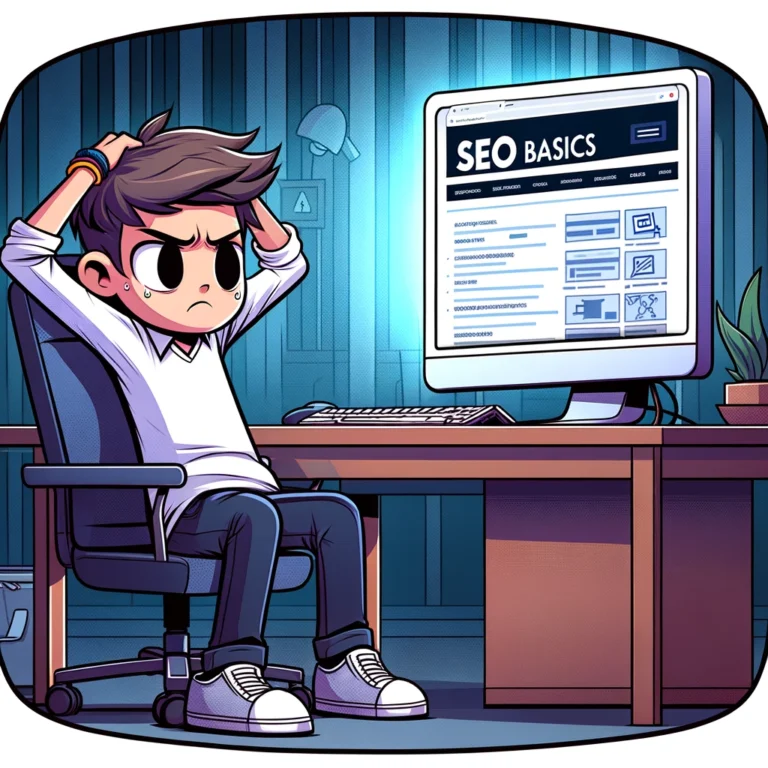Canonical tags are a crucial but often overlooked component of Search Engine Optimization (SEO). This guide aims to demystify the concept of canonical tags, exploring their functionality, importance, and the benefits they offer to your website’s SEO strategy.
What are Canonical Tags?
A canonical tag (officially known as the “rel=canonical” link element) is a part of the HTML code that helps webmasters prevent duplicate content issues in SEO by specifying the “canonical” or “preferred” version of a web page. It’s like telling search engines, “Of all the pages that are similar, this is the main one you should pay attention to.”
Imagine you have a product that is accessible by multiple URLs – perhaps due to tracking parameters, session IDs, or simply an alternative URL. Without a canonical tag, search engines might see these as separate pages with identical content, which can dilute your search rankings. By using a canonical tag, you clarify which version of the page search engines should index and rank, thereby consolidating your SEO efforts and enhancing your site’s overall performance.
How Do Canonical Tags Work?
To implement a canonical tag, you add a line of HTML code to the <head> section of your web page:
htmlCopy code<link rel="canonical" href="https://www.example.com/preferred-url"/>
This tag points to the URL you designate as the canonical version. It does not prevent the other versions from being accessed by users, but it does guide search engines on which version to index. This becomes incredibly important in managing your site’s SEO because it consolidates link equity (the cumulative value provided by links) on a single preferred URL, making your selected page stronger in terms of search ranking potential.
The Importance of Canonical Tags
Canonical tags are essential for several reasons:
1. Prevents Duplicate Content Issues
Duplicate content can significantly harm your SEO by splitting link equity and confusing search engines about which page to rank. Canonical tags help you avoid these issues by clearly signaling which page is the main one.
2. Consolidates Link Equity
Links are a critical factor in SEO. If multiple pages with the same content receive links, the link equity is spread across these pages, weakening the potential impact. A canonical tag helps focus all link equity on a single page, enhancing its ability to rank higher.
3. Improves Crawl Efficiency
Search engines allocate a crawl budget for each site — the number of pages the search engine bot will crawl at a given time. By using canonical tags, you help search engines avoid wasting crawl budget on duplicate pages, allowing more important pages to be crawled and indexed more frequently.
4. Aids in Content Syndication
If you syndicate your content on other sites, canonical tags can be used to point back to the original article on your site. This tells search engines where the original, authoritative version of the content resides, helping maintain your site’s credibility and ranking power.
Best Practices for Using Canonical Tags
While canonical tags are powerful, their improper use can lead to issues such as accidental de-indexing of pages. Here are some best practices to ensure you’re using canonical tags effectively:
- Verify the tag points to a live URL: Always ensure the URL specified in the canonical tag is accessible and not leading to a 404 or a redirect.
- Be consistent: Ensure that internal links and sitemap entries match your canonical URLs, reinforcing your canonical directives to search engines.
- Use absolute URLs: Absolute URLs are less prone to errors. For instance, use
https://www.example.com/pageinstead of/page. - Implement across domains: If you operate multiple domains, canonical tags can help manage cross-domain duplicate content as well.
Canonical tags are a vital component of any SEO strategy, especially for sites that publish content across multiple URLs. They help streamline your efforts and focus your SEO impact, which can significantly enhance your visibility and rankings in search engine results. By understanding and implementing the correct use of canonical tags, you can ensure that your site’s SEO foundation is strong, and your content has the best chance of reaching its target audience.
In the ever-evolving landscape of SEO, staying informed and implementing foundational SEO practices like canonical tags can set your website apart from the competition. Start optimizing today and watch your site’s SEO health improve!

Exploring the Impact of Canonical Tags on SEO
In the world of SEO, canonical tags are not just about managing content and preventing duplication; they also play a significant role in enhancing the user experience and supporting your site’s metadata. Let’s dive deeper into how canonical tags can impact different aspects of your SEO strategy and why they are indispensable for maintaining a healthy digital presence.
Strengthening Local SEO
For businesses that operate in multiple regions with localized content, canonical tags help emphasize the primary version of similar content. For instance, if you have separate URLs for the same product catering to different geographical areas, you can use canonical tags to prevent these pages from competing against each other in search engine results pages (SERPs). This is especially useful in ensuring that the most relevant page is shown to users based on their location, thereby improving user experience and engagement.
Enhancing Mobile SEO
With the increase in mobile usage, many sites create separate mobile versions of their pages. Here, canonical tags come into play to manage the relationship between desktop and mobile content. By using the canonical tag, you can direct search engines to consider the desktop version as the primary source of content, which can be crucial if the mobile version is an abbreviated form of your desktop site. This helps maintain the integrity of your SEO efforts across different platforms and ensures consistency in how your content is indexed and ranked.
Integrating with Other SEO Elements
Canonical tags should be integrated thoughtfully with other SEO elements such as hreflang tags, which are used for language and regional URL management. When combined correctly, canonical and hreflang tags can enhance the site’s SEO by providing clear signals to search engines about the relationship between URLs, which improves indexing and ranking accuracy for different language versions of your site.
Troubleshooting Common Issues
While canonical tags are highly beneficial, they can sometimes lead to issues if not implemented correctly. Common problems include:
- Self-referencing canonicals: While it’s a good practice to include a canonical tag even on the canonical page itself, mistakes in these tags can cause the wrong page to be treated as canonical.
- Chain canonicals: Avoid creating long chains of canonical tags (Page A points to Page B, which points to Page C, and so on), as they can dilute the clarity of the canonical signal and may not be followed by search engines.
- Conflicting signals: Ensure that your canonical tags do not conflict with other signals you send to search engines, such as noindex tags or conflicting redirects, as these can confuse search engines and lead to unintended indexing outcomes.
Monitoring and Maintenance
Implementing canonical tags is not a set-it-and-forget-it task. Regular monitoring and maintenance are required to ensure that they continue to serve their intended purpose. Use tools like Google Search Console to check how search engines are interpreting your canonical tags. Make adjustments as your site evolves and as new content is added to ensure that your canonical tags are always up to date and reflective of the most relevant pages.
Key Takeaways
Canonical tags are a powerful SEO tool that helps manage duplicate content, consolidate link equity, and enhance the overall effectiveness of your site in search results. By correctly implementing and regularly reviewing your canonical tags, you can avoid common SEO pitfalls and ensure that your site maintains a strong presence in search engines.
By embracing the strategic use of canonical tags, you’re not just optimizing your site for search engines, but you’re also providing a better, more coherent user experience. Whether you’re managing an e-commerce site with multiple product listings, a global brand with regional variations, or a mobile-centric content strategy, canonical tags are indispensable for your SEO toolkit.
As we continue to navigate the complexities of SEO, remember that the ultimate goal is to ensure that your content is seen and valued. Canonical tags are just one of many tools in your SEO arsenal that can help you achieve this goal.



